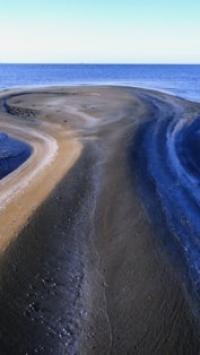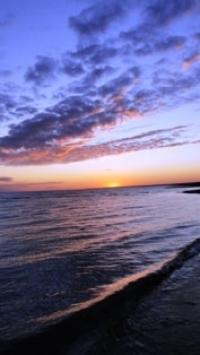Вы здесь
Caspian Sea in Kazakhstan.



Holiday Tours Mangyshlak.
“Thought is invisible nature”
Heinrich Heine.
Trip to Caspian Sea Mangyshlak.
Caspian Sea is the largest closed reservoir in the world, which washes the western part of Kazakhstan. It is located between Europe and Asia. Due to its size it is called a sea. The length of the coastline of the Caspian Sea is 7000 km. Its waters wash the coasts of five countries.
Kazakhstan has 29% (2340 km) of the coastline, the major part of the northern and half of the eastern coast of the Caspian Sea. The name of the Sea is connected with the Caspii tribes who had settled shores from time immemorial.
It had had such names as Girkanskoye, Khazarskoye, Khvalynskoye. There are 769 species of animals, 55 species of fish (the most valuable are beluga, sturgeon, stellate sturgeon), more than 500 species of plants in the Caspian Sea.
The share of the Caspian Sea is above 80% for sturgeon caught in the world annually. 40% of the sturgeon caught belongs to Kazakhstan. In the Caspian Sea there are also sazan, vobla and other fish.
Within Kazakhstan Ural River with its tributary Ilek and Emba River flow into the Caspian Sea. The first mentions about Caspian Sea and its tribes were in the works of Gerodot. The document about the Russian navigators’ visit of Caspian Sea and theirs boating is dated back to IX - X centuries.
At the beginning of XVIII century Peter-I had begun the constant research of the Caspian Sea (expeditions of Bekovich-Cherkasky A. and others). Then Soimonov I.F., Ivashinsev N.A., Pallas P.S., Gmelin S.G., Karelin G.S., and others researched the Caspian Sea.
The Caspian Sea is stretched from north to south to 1200 km; the medium width is 320 km, the length of the shore line is about 7000 km (6000 km of which in the territory of Russia and other countries).
The area of waterland is 371000 sq.km; the sea level is lower than ocean’s level to 28,5 (1971). The max depth is 1025 m (in the southern part); the Kazakhstan part is not deep, the depth of the north Caspii is about 15 - 20m.
The Caucasus Mts. rise from the southwestern shore, and the Elburz Mts. parallel the southern coast. The Caspian receives the rate of evaporation is particularly high in the eastern inlet called Garabogaz-Gol, which is exploited for salt.
Variations in evaporation account for great changes in the size of the sea during the course of history. The damming and diversion of the Volga's water for industrial and residential use have been the leading reasons for the lowering of the Caspian's water level, a problem of serious proportions.
The chief ports on the Caspian are Baku, a major oil center, and Astrakhan, at the mouth of the Volga. Underlying the Caspian are some of the world's largest oil reserves, and the five surrounding countries, all with major stakes in oil-field development, have disputed zones of control, although Russia has signed territorial agreements with Kazakhstan and Azerbaijan.
The Caspian also has important fisheries. The northern part of the sea is the chief source of beluga caviar, but the destruction of spawning areas and illegal fishing has greatly reduced the number of sturgeon, and fishing quotas have been imposed. In 2003 a framework.
The largest gulfs are: Komsomolets, Mangyshlaksky (Magistau), Kenderli, Kazakhsky, Kara-Bogas-Gol, etc. The total territory of the 50 islands is about 350sq.km. The rivers Volga, Ural and Emba flow into the Caspian Sea from the north side.
By the bottom relief and hydrological features we can distinguish the Northern, the Middle and the Southern Caspii. At the bottom of the Caspian Sea there are deposits of oil and gas. The Caspian Sea crosses some climate zones: in the northern part - the continental, on the western – the temperate-warm, in the south-western – wet-subtropical, on the east – dry-steppe zone.
The northern part differentiates by the sudden changeability of the air temperature and insufficiency of atmospheric precipitation. In the northern and middle parts in October-April the wind blows from the east, in May-September the monsoon wind blows from the north-western part to the south, on the eastern middle parts, in the north-western and north parts there are such winds the speed of which exceeds 24 m/s.
The total season fluctuation is about 30 cm. It is known, that the lowest sea level was in VII-XI centuries (to 2 - 4m lower than nowadays). The last falling of the sea level continued from 1929 to 1057.
The falling of the sea level is the result of dry climate, and the building of the largest hydrotechnic and irrigation buildings on the river. Flora and fauna of the Caspian Sea are comparatively poor.
More than 500 kinds of plants, 854 kinds of fishes and animals, some kinds of aquatic birds dwell here. There are large populated areas near the Caspian Sea such as: Guriev, Shevchenko, Eraliev, Balykshy, Ganushkino, etc and important economic regions.
The Caspian boasts а unique fauna, with over 60 endemic include seals otherwise restricted to arctic seas, suggesting that once, many millennia ago, the Caspian was part of the Arctic Ocean.
Another weird fact: mullet originally relocated in the Caspian from the Black Sea - or rather, their - аre now strikingly bigger and fatter than those relatives of theirs who stayed in the Black Sea.
There are also ruff, perch, bullhead, salmon, conny, grass carp, black-backed shad herring, sazan, pike-perch and zherekh in the Caspian; but the richest and best-knоwn source of the Caspian's piscine wealth аrе the fish belonging to the sturgeon family: the beluga, stellate and barbell sturgeons.
In short, fish-fanciers will thrill to the wide variety of fish оn offer here. But Caspian also has а lot to offer the human beach-dweller, especially the stretch of shore hundreds of kilometres long between Аktau and the south.
This раrt of the shore offers а wide choice of resorts, the most popular being Kenderly, the site of а major modem hotel development. The аrea also offers unblemished sandy beaches and а longish season: about five months, from Мау to the beginning of October.
What else sets а Caspian beach holiday apart from such holidays in other climes? Very possibly the presence in the immediate environment of so much of cultural and historical interest: the fact that you саn combine lolling оn the beach with а modicum of genuine self-improvement - so good foг the conscience.

Authority:
The guidebook across Kazakhstan . Authors Dagmar Schreiber and Jeremy Tredinnick. Publishing house "Odyssey".2010. The Columbia Encyclopedia, 6th ed. 2011
Photos
Alexaander Petrov.







